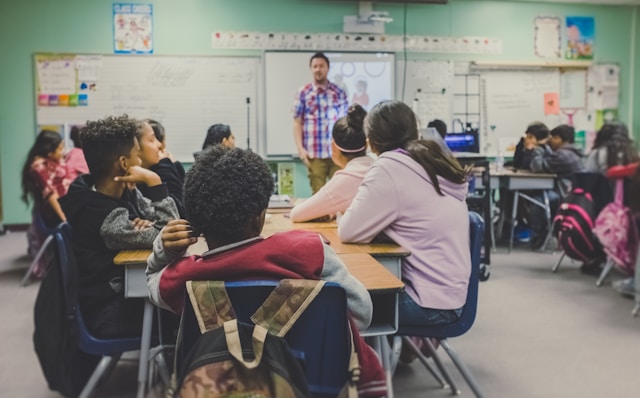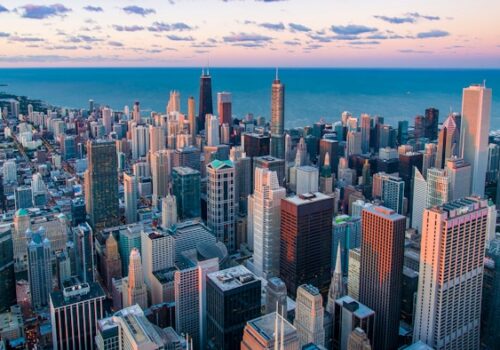The Role of Social Media in Student Activism and Social Movements
Student activism refers to the collective efforts and actions undertaken by students to address social, political, or environmental issues that concern them. It often involves organizing protests, rallies, campaigns, and other forms of civil disobedience to raise awareness and demand change. Social movements, on the other hand, are broader collective actions aimed at challenging or transforming existing systems, norms, or practices within a society. These movements can encompass diverse causes, such as civil rights, environmental protection, or economic justice, and often involve various stakeholders, including students, activists, organizations, and communities.
The advent of social media platforms has revolutionized the way people communicate, share information, and organize collective action. Platforms like Facebook, Twitter, Instagram, and others have provided powerful tools for individuals and groups to connect, mobilize, and amplify their voices on a global scale. These digital spaces have enabled activists, particularly students, to bypass traditional media channels, rapidly disseminate information, and coordinate efforts in real-time.
The Power of Social Media in Mobilizing Movements
Reaching a wider audience
One of the most significant advantages of social media for student activism and social movements is its ability to reach a vast and diverse audience. Through platforms like Facebook, Twitter, and Instagram, activists can share their messages, campaigns, and calls to action with millions of people worldwide, transcending geographical boundaries. This wide reach allows for the rapid spread of information, garnering support and amplifying the voices of those involved in the movements.
Facilitating coordination and organization
Social media has proven to be an invaluable tool for coordinating and organizing protests, rallies, and other collective actions. Platforms like Facebook and messaging apps like WhatsApp and Telegram allow activists to create groups, share event details, and mobilize participants in real-time. This level of coordination and organization was previously challenging, but social media has streamlined the process, enabling quick response and adaptation to changing circumstances.
Raising awareness and sharing information rapidly
Social media has played a pivotal role in raising awareness about various causes and issues. Through the sharing of posts, images, videos, and live streams, student activists and social movements can quickly disseminate information and updates about their initiatives, successes, and challenges. This rapid sharing of information has the power to garner public attention, inspire engagement, and rally support from individuals and organizations around the world.
Case Studies of Social Media’s Impact on Student Activism
The Arab Spring (2010-2012)
Role of social media in coordinating protests The Arab Spring, a series of pro-democracy uprisings that swept across the Middle East and North Africa, was significantly facilitated by the use of social media platforms. In countries like Egypt and Tunisia, platforms like Facebook and Twitter played a crucial role in coordinating protests, sharing information about gathering points, and mobilizing demonstrators.
Sharing information and raising global awareness Social media also served as a powerful tool for sharing information and raising global awareness about the Arab Spring protests. Activists and citizen journalists used platforms like YouTube and Twitter to document and share live updates, videos, and images from the protests, bypassing traditional media channels that were often censored or restricted. This real-time sharing of information helped galvanize international support and drew attention to the protesters’ demands for political and social reforms.
The Umbrella Movement in Hong Kong (2014)
Use of social media to mobilize students and civilians In 2014, the Umbrella Movement in Hong Kong saw students and civilians taking to the streets to protest against proposed electoral reforms by the Chinese government. Social media played a pivotal role in mobilizing and organizing the protests. Platforms like Facebook and messaging apps like WhatsApp and Telegram were used to coordinate protest locations, share updates, and rally supporters.
Disseminating footage and updates on the protests Throughout the Umbrella Movement, social media was instrumental in disseminating footage and updates from the protests to a global audience. Activists and participants used platforms like Twitter, Instagram, and livestreaming services to share real-time videos and images of the demonstrations, police responses, and the occupation of public spaces. This live coverage helped garner international attention and support for the movement’s demands for greater democracy and autonomy.
The Double-Edged Sword of Social Media
While social media has undoubtedly been a powerful tool for student activism and social movements, it is important to acknowledge its potential downsides and challenges.
Misinformation and fake news
One of the major concerns surrounding social media is the spread of misinformation and fake news. In the context of activism and social movements, the rapid dissemination of inaccurate or misleading information can undermine credibility, sow confusion, and potentially harm the causes being advocated for. Activists and participants must be vigilant in verifying information and fact-checking before sharing or amplifying content online.
Cyberbullying and online harassment
Social media platforms have also been breeding grounds for cyberbullying and online harassment, particularly targeting activists, organizers, and outspoken individuals. This can take the form of hate speech, personal attacks, doxing (publishing private information), and other forms of harassment. Such actions can have a chilling effect on free speech, discourage participation, and pose serious safety concerns for those involved in activism and social movements.
Surveillance and censorship concerns
Governments and authorities have increasingly employed surveillance measures and censorship tactics to monitor and suppress online activism and dissent. Social media platforms have been subject to data requests, content takedowns, and even temporary shutdowns during periods of unrest or protests. This raises concerns about privacy, freedom of expression, and the ability of activists and movements to effectively organize and communicate online.
While social media has been a powerful force for student activism and social movements, it is essential to be aware of these potential challenges and develop strategies to mitigate them. This includes promoting digital literacy, fact-checking, and responsible online behavior, as well as advocating for robust privacy protections and safeguards against censorship and surveillance.
Strategies for Effective Social Media Activism
To harness the full potential of social media while mitigating its challenges, student activists and social movements can employ various strategies:
Verifying information and fact-checking
In the age of misinformation and fake news, it is crucial for activists and movements to prioritize verifying information and fact-checking before sharing or amplifying content online. This can be achieved by cross-referencing information from reputable sources, consulting fact-checking websites, and encouraging critical thinking among followers and supporters.
Building online communities and networks
Social media can be leveraged to build strong online communities and networks of supporters, allies, and like-minded individuals. By fostering these connections, activists and movements can amplify their voices, share resources, and coordinate efforts more effectively. Platforms like Facebook groups, Twitter chats, and dedicated forums can facilitate these interactions and foster a sense of collective action.
Utilizing multiple platforms and multimedia content
Effective social media activism often requires a multi-platform approach, leveraging various platforms and multimedia content to reach diverse audiences. For example, using Instagram for visual storytelling, Twitter for real-time updates, and YouTube for long-form videos can help capture the attention and engagement of different segments of the audience. Additionally, integrating multimedia elements like infographics, live streams, and interactive content can enhance the impact and reach of messaging.
Engaging with influencers and amplifying grassroots voices
Collaborating with social media influencers and amplifying grassroots voices can be a powerful strategy for student activists and social movements. Influencers with large followings can help raise awareness and lend credibility to causes, while amplifying the voices of those directly impacted by the issues can foster authenticity and connect with audiences on a deeper level.
Monitoring and responding to online harassment and threats
While online harassment and threats are unfortunate realities, it is essential for activists and movements to have strategies in place to monitor and respond to such incidents. This may involve reporting abuse, documenting evidence, seeking legal assistance when necessary, and providing support and resources for those affected.




